Discover the Zheng Guo Canal Head Ruins: A Journey Through Ancient Chinese Engineering
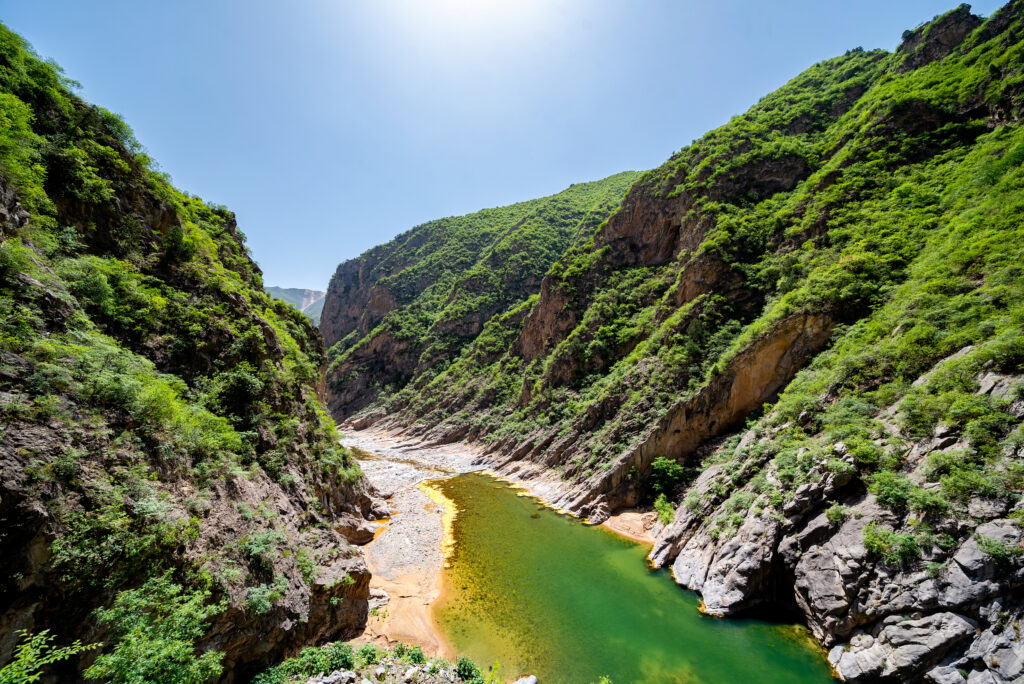
An Essential Guide to Visiting Zheng Guo Canal Head Ruins
In This Guide
- An Essential Guide to Visiting Zheng Guo Canal Head Ruins
- The Rich History and Legends of Zheng Guo Canal Head Ruins
- Main Highlights: What You Absolutely Can’t Miss
- Planning Your Visit: A Practical Guide
- Tickets: Prices, Booking, and Tips
- How to Get There: A Complete Transportation Guide
- Local Cuisine and Accommodation Nearby
- Frequently Asked Questions
- Final Thoughts on Your Trip
Nestled in the picturesque landscapes of Xianyang City, the Zheng Guo Canal Head Ruins offer an extraordinary glimpse into ancient Chinese engineering and agricultural innovation. This remarkable site, a testament to the ingenuity of the Qin State during the Warring States Period, is not just a relic of the past; it is a vibrant testament to the role of water management in shaping civilization.
As you wander through the scenic area, you will discover the remains of one of China’s three most significant water conservancy projects, alongside Sichuan’s Dujiangyan Irrigation System and Guangxi’s Lingqu Canal. The Zheng Guo Canal showcases the sophisticated irrigation techniques that supported agriculture and fueled the growth of the Qin dynasty, which eventually unified China.
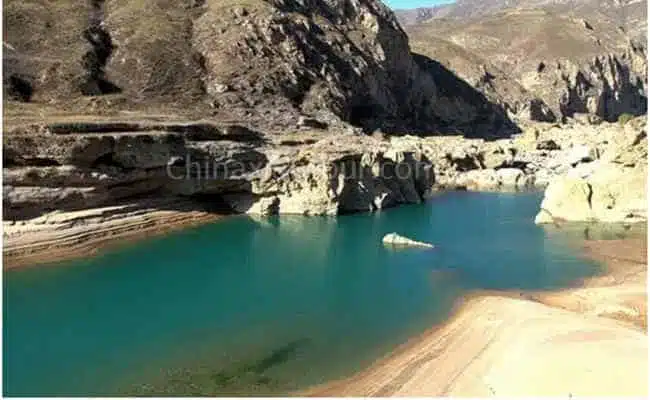
Zheng_Guo_Canal_Head_Ruins.
Key Highlights
-
Historical Significance: The canal’s origins date back over 2,300 years, serving as a vital irrigation system that transformed arid lands into fertile fields, thus supporting the livelihoods of countless farmers.
-
Stunning Scenery: The surrounding area is divided into five distinct zones, including the Jinghe River Geological Park and Wenjing Lake Resort, each offering unique natural beauty and recreational opportunities.
-
Cultural Immersion: Visiting the ruins not only allows you to appreciate ancient engineering but also invites you to engage with local culture and customs. The nearby Yuanjia Village, with its well-preserved Ming and Qing dynasty architecture, provides an enchanting backdrop for a deeper understanding of the region’s rich heritage.
Practical Information
-
Location: The Zheng Guo Canal Scenic Area is located northwest of Wangqiao Town, Jingyang County, Xianyang City, making it easily accessible for day trips from nearby urban centers like Xi’an.
-
Opening Hours: The scenic area is open daily from 8:30 AM to 6:00 PM, with ticket sales ending at 3:30 PM. It’s advisable to allocate at least half a day to fully explore the site and its surroundings.
-
Ticket Prices: Admission fees are quite reasonable, with adults paying approximately CNY 69 and children CNY 60, making it an affordable cultural excursion.

Zheng_Guo_Canal_Head_Ruins.
Tips for Your Visit
-
Best Time to Visit: While the site is beautiful year-round, spring and autumn offer the most pleasant weather, perfect for hiking and photography.
-
What to Bring: Comfortable walking shoes, a camera for capturing the stunning scenery, and perhaps a picnic to enjoy by the lake.
-
Nearby Attractions: Don’t miss the chance to visit the enchanting Yuanjia Village after your exploration of the canal ruins. The blend of history and nature will leave you with unforgettable memories.
In the heart of China, the Zheng Guo Canal Head Ruins stand as a proud reminder of human ingenuity and perseverance. As you delve into this historical site, you’ll not only witness the remnants of a bygone era but also experience the enduring spirit of Chinese culture that continues to thrive today.
The Rich History and Legends of Zheng Guo Canal Head Ruins
The Zheng Guo Canal, a monumental feat of ancient engineering, stands as a testament to the ingenuity and foresight of the Qin State during the tumultuous Warring States Period (475-221 BC). This vast irrigation project, widely regarded as one of the three greatest water conservancy systems in China—alongside the Dujiangyan Irrigation System and the Lingqu Canal—has not only shaped the landscape of the region but also played a crucial role in agricultural development.
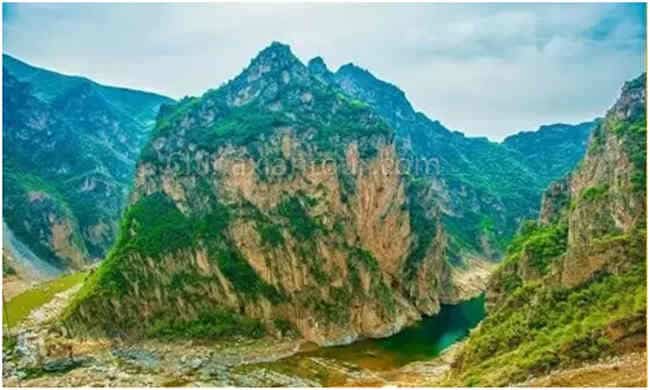
Zheng_Guo_Canal_Head_Ruins.
Historical Significance
The canal was commissioned by the visionary statesman Zheng Guo, whose name it bears. Recognizing the pressing need for a reliable water source to support agriculture and sustain his state, Zheng Guo undertook the ambitious project to channel water from the Jinghe River to the arid plains of the Qin territory. This initiative not only enhanced agricultural productivity but also laid the groundwork for the unification of China under the Qin Dynasty.
Completed in the 3rd century BC, the Zheng Guo Canal featured advanced engineering techniques for its time, including precise gradient calculations to ensure efficient water flow. The canal spans over 400 kilometers and is considered an engineering marvel, showcasing the sophistication of ancient Chinese hydraulics. It facilitated the growth of crops, supported local economies, and fostered social stability—an essential factor during the era of constant warfare.
Legends and Folklore
Throughout its history, the Zheng Guo Canal has not only been a source of sustenance but also a wellspring of legends and cultural significance. One popular legend tells the tale of Zheng Guo himself, who, while supervising the construction of the canal, encountered a formidable storm. As the wind howled and the rain poured, Zheng Guo reportedly prayed to the river gods for their assistance. Miraculously, the storm subsided, and the river’s flow steadied, allowing the workers to continue their task unhindered. This event solidified his reputation as a wise and capable leader, further entwining his legacy with that of the canal.
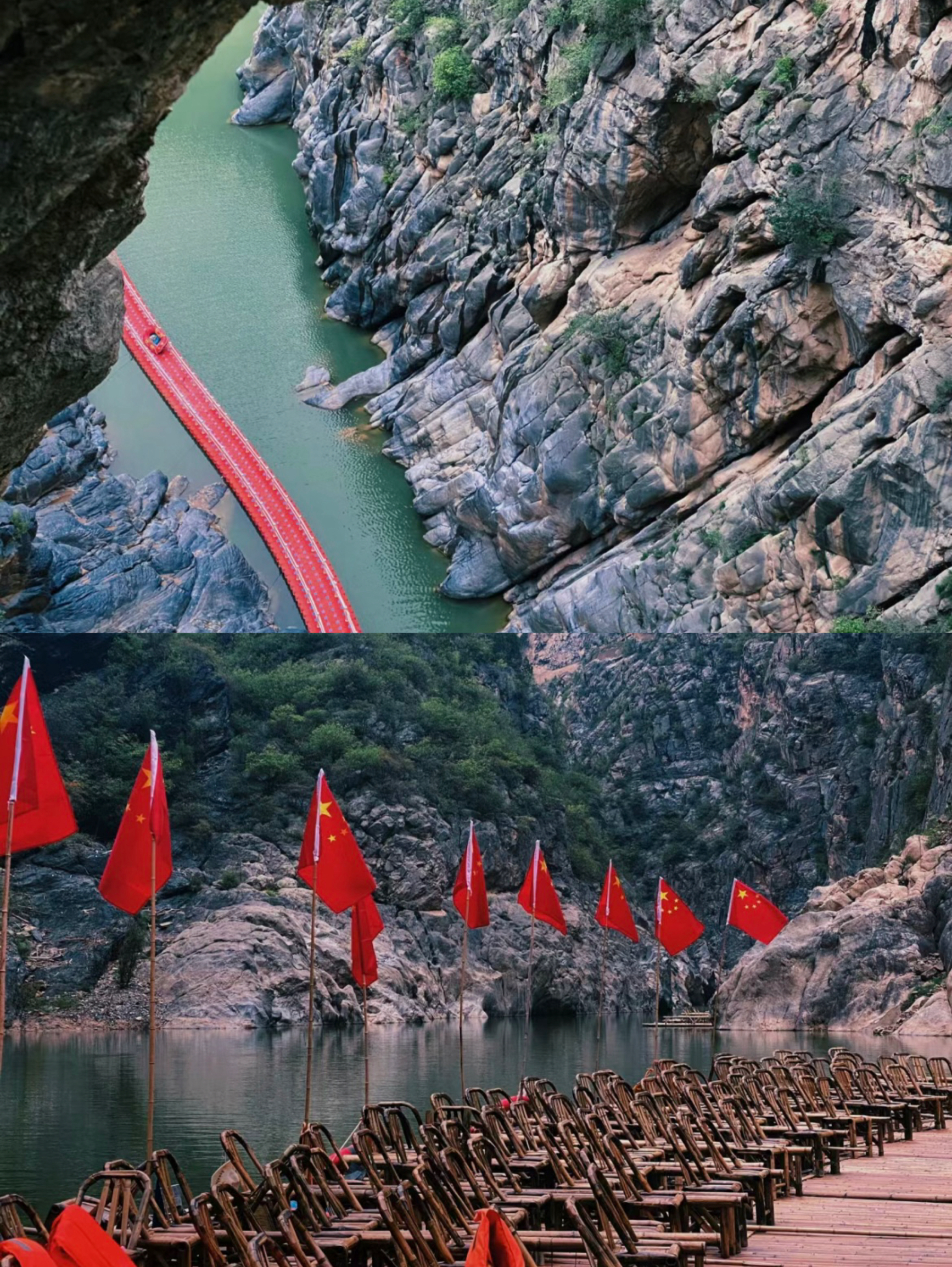
Zheng_Guo_Canal_Head_Ruins.
Another compelling narrative involves the ancient practice of water divination, where locals would consult shamans to predict the best times for irrigation. It is said that the success of the Zheng Guo Canal was not merely due to engineering prowess but also the blessings of the water spirits who watched over the project. This belief imbued the canal with a spiritual significance, creating a deep cultural connection between the people and the water that nourished their fields.
Cultural Reverberations
The Zheng Guo Canal remains an integral part of local culture and identity, often celebrated in poetry and song. Festivals centered around the canal commemorate its historical impact and the agricultural bounty it provides. Traditional art forms, including folk dances and local crafts, frequently draw inspiration from the canal, reinforcing its status as a symbol of prosperity and wisdom.
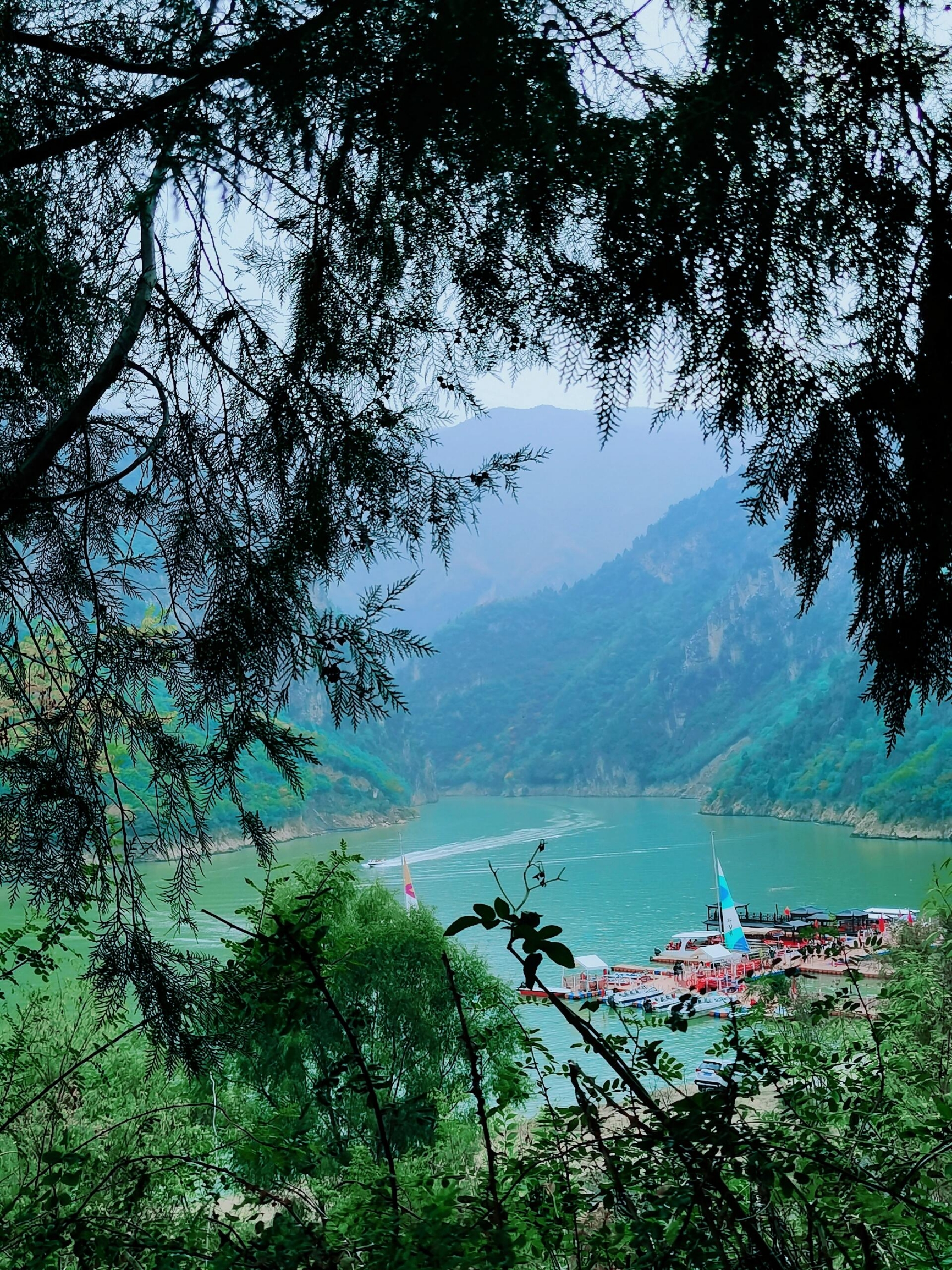
Zheng_Guo_Canal_Head_Ruins.
Visitors to the Zheng Guo Canal Scenic Area can explore the remnants of this ancient engineering marvel while immersing themselves in the surrounding natural beauty. The site has been transformed into a scenic area that encompasses various attractions, including geological parks and picturesque lakes, all while educating guests about the rich history and legends that breathe life into this extraordinary landmark.
Conclusion
The Zheng Guo Canal is more than just an irrigation system; it is a living history that encapsulates the spirit of innovation and resilience of the ancient Chinese civilization. For travelers seeking to understand the depths of Chinese history and culture, a visit to the Zheng Guo Canal Head Ruins offers a captivating glimpse into the past—a journey through time where the stories of old continue to flow like the waters of the canal itself.
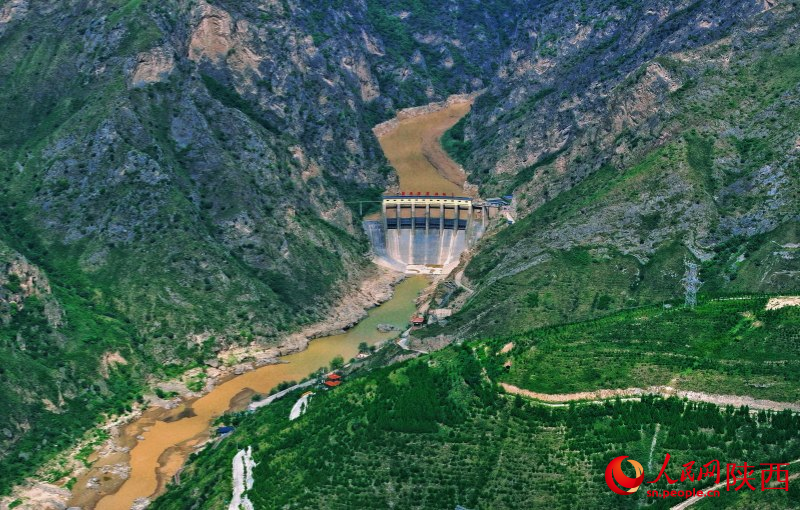
Zheng_Guo_Canal_Head_Ruins.
Main Highlights: What You Absolutely Can’t Miss
Discover the Treasures of Zheng Guo Canal Head Ruins
Nestled in the scenic beauty of Xianyang City, the Zheng Guo Canal Scenic Area is a historical gem that transports visitors back to the Warring States Period of ancient China. This remarkable irrigation project is not only a testament to the ingenuity of the Qin State but also a vital part of China’s rich water conservancy heritage. Here’s what you absolutely can’t miss during your visit.
1. The Ancient Irrigation System
The centerpiece of the Zheng Guo Canal Scenic Area is the ancient irrigation system, constructed over 2,300 years ago. This engineering marvel was designed to divert water from the Jing River to nourish the arid farmlands of the Qin State. As you wander along the remnants of the canal, you’ll gain insight into the sophisticated techniques employed by ancient engineers. The canal itself serves as a living museum of water management, showcasing the critical role of irrigation in Chinese agriculture.

Zheng_Guo_Canal_Head_Ruins.
2. Jinghe River Geological Park
Venture into the Jinghe River Geological Park, where natural beauty meets geological wonders. This area features stunning rock formations and scenic vistas, making it a perfect spot for nature lovers and photographers alike. The park’s trails provide a refreshing opportunity to explore the picturesque landscapes while learning about the geological history of the region.
3. Heigouqi Gorge Area
A visit to the Heigouqi Gorge Area is a must for adventure seekers. This dramatic gorge offers breathtaking views and thrilling hiking opportunities. The unique topography and the sound of rushing water create a serene atmosphere that’s perfect for reflection and exploration. Don’t forget your camera—this is a landscape you’ll want to capture!
4. Wenjing Lake Resort
For those seeking relaxation, Wenjing Lake Resort is the ideal spot. Surrounded by lush greenery and tranquil waters, this resort provides an escape from the hustle and bustle. Visitors can enjoy leisurely walks along the lake, partake in boating activities, or simply bask in the beauty of the surroundings. It’s a wonderful place to unwind and soak in the serenity of nature.
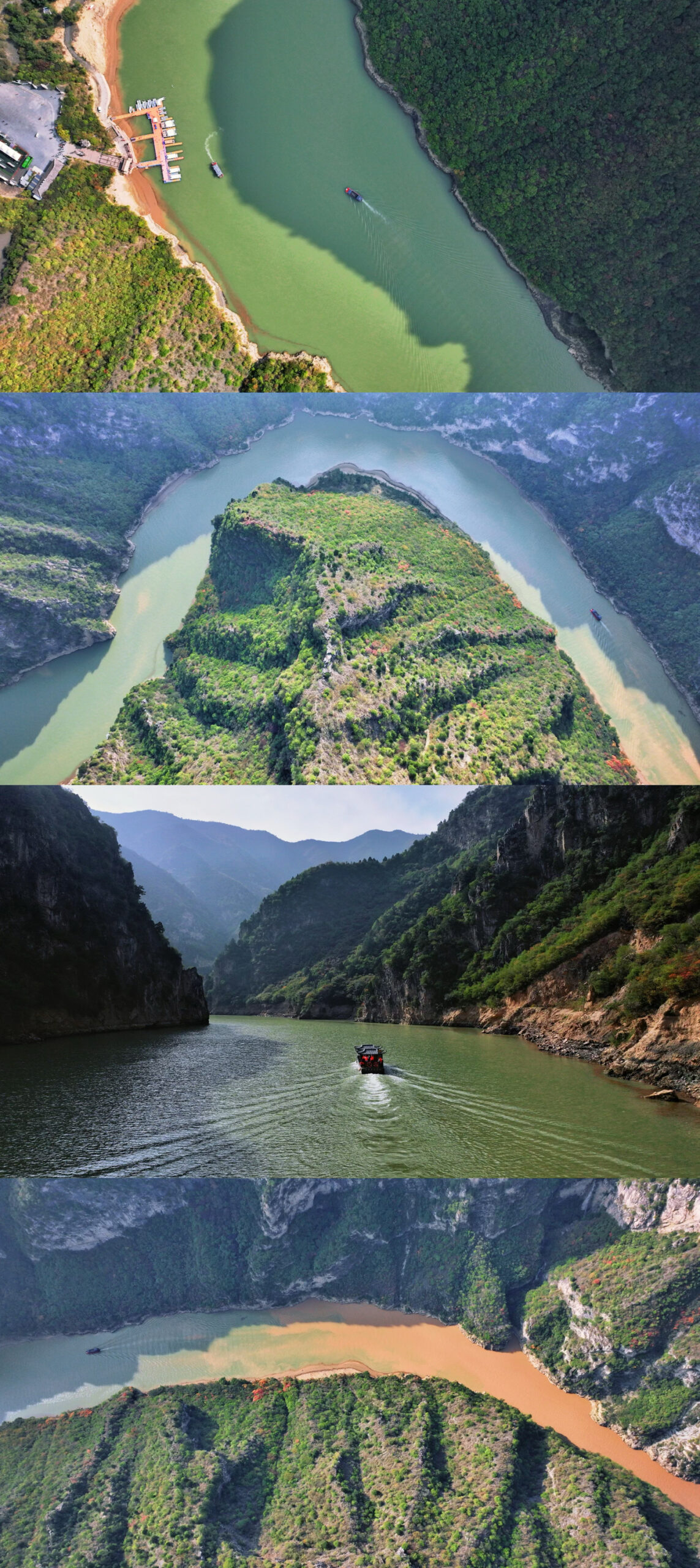
Zheng_Guo_Canal_Head_Ruins.
5. Beizhong Mountain Tourist Area
Lastly, make your way to the Beizhong Mountain Tourist Area. Known for its stunning mountain vistas and rich biodiversity, this area is perfect for hiking enthusiasts and nature lovers. The panoramic views from the mountain peaks are simply breathtaking, offering a unique perspective of the Zheng Guo Canal and its surrounding landscapes.
Practical Information
- Opening Hours: Daily from 8:30 AM to 6:00 PM (last admission at 3:30 PM)
- Recommended Visit Duration: 0.5 to 1 day
- Tickets: Approximately CNY 69 for adults, CNY 60 for children
Final Thoughts
The Zheng Guo Canal Scenic Area is more than just a historical site; it is a gateway into the ancient wisdom of water management and a stunning natural retreat. Whether you are a history buff, a nature enthusiast, or simply looking for a picturesque spot to relax, this scenic area has something for everyone. Plan your visit and immerse yourself in the rich tapestry of Chinese history and culture that this remarkable site offers.
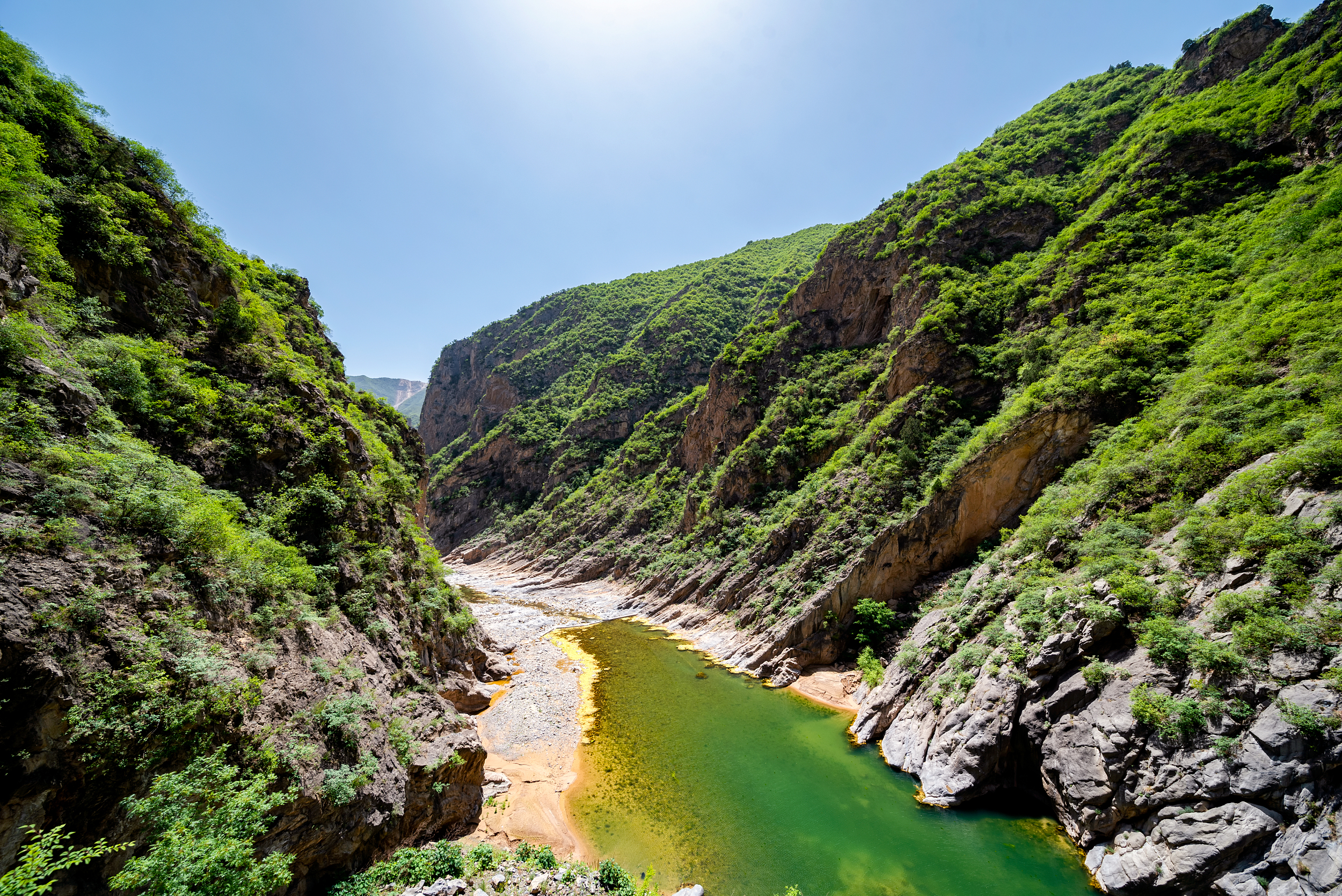
Zheng_Guo_Canal_Head_Ruins.
Planning Your Visit: A Practical Guide
Preparing for Your Journey to Zheng Guo Canal Head Ruins
Visiting the Zheng Guo Canal Head Ruins is an enriching experience that unveils the brilliance of ancient Chinese engineering. Nestled in the scenic landscape of Xianyang, this site is not only a testament to the ingenuity of the Qin dynasty but also a beautiful area for exploration and relaxation. Here’s how to make the most of your visit.
Getting There
- Location: The Zheng Guo Canal Scenic Area is located in northwest Wangqiao Town, Jingyang County, Xianyang City, Shaanxi Province.
- Transportation:
- By Car: If you’re driving, the scenic area has ample parking available.
- Public Transport: Consider taking a bus from Xianyang City to the scenic area. Check local schedules for the latest routes.
- Airport Access: Xianyang International Airport is well connected by subway and bus services, making it easy to reach the city center and then the canal site.
Opening Hours and Admission
- Hours: The scenic area is open daily from 8:30 AM to 6:00 PM. Note that ticket sales end at 3:30 PM, so plan your arrival accordingly.
- Ticket Prices: Admission is typically around CNY 69 for adults and CNY 60 for children. It’s advisable to check for any special promotions or discounts ahead of your visit.
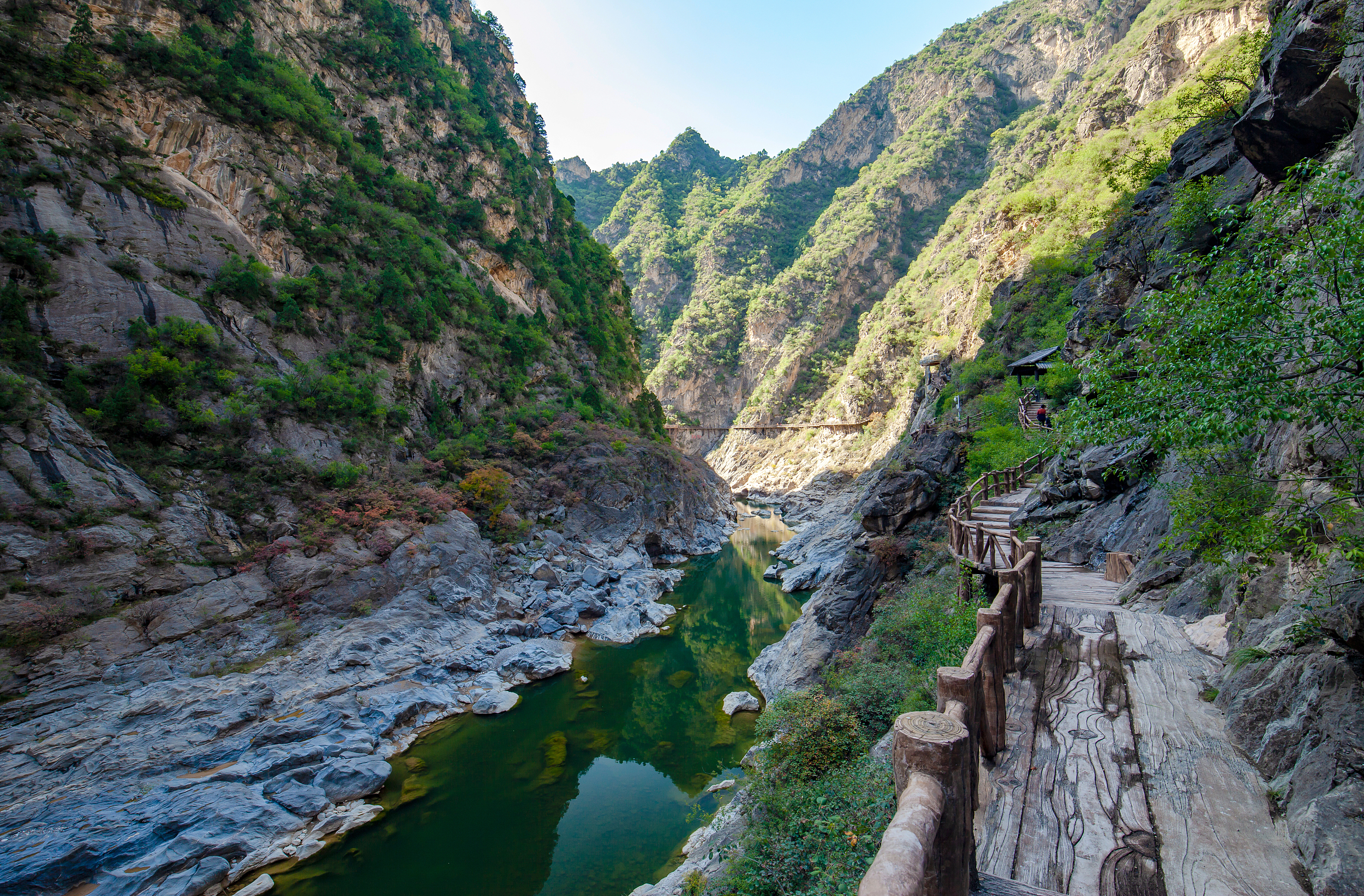
Zheng_Guo_Canal_Head_Ruins.
Recommended Duration
Plan to spend half a day to one full day exploring the canal and its surrounding attractions. This allows ample time for sightseeing, photography, and enjoying the natural beauty.
What to See
The Zheng Guo Canal Scenic Area encompasses five distinct zones, each offering unique experiences:
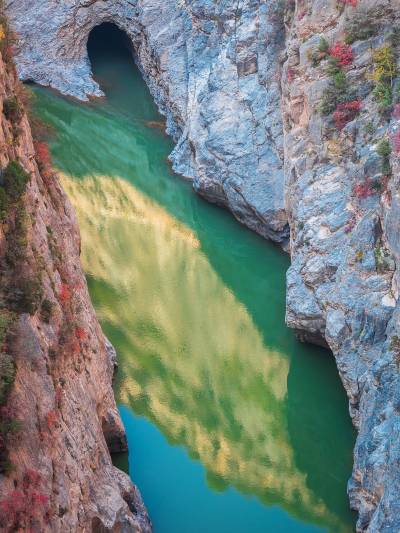
Zheng_Guo_Canal_Head_Ruins.
- Jinghe River Geological Park: Marvel at the geological formations and scenic views along the river.
- Jinghe River Canyon Sightseeing Area: Perfect for hiking and enjoying the breathtaking canyon vistas.
- Heigouqi Gorge Area: A picturesque gorge, ideal for nature lovers and photographers.
- Wenjing Lake Resort: A tranquil spot to relax or have a picnic by the lake.
- Beizhong Mountain Tourist Area: Explore hiking trails and enjoy panoramic views of the region.
Cultural Insights
The Zheng Guo Canal is among the three largest water conservancy projects in ancient China, alongside Sichuan’s Dujiangyan and Guangxi’s Lingqu Canal. Understanding its historical significance will enhance your appreciation of the site. Consider hiring a local guide or renting an audio guide to delve deeper into its rich history.

Zheng_Guo_Canal_Head_Ruins.
Nearby Attractions
While in the area, don’t miss visiting:
- Yuanjia Village: A charming ancient village that showcases Guanzhong folk culture and Ming-Qing dynasty architecture, just a short drive away.
- Han Yangling National Archaeological Site Park: Explore the archaeological treasures of the Han dynasty.
- Daming Palace National Heritage Park: A site rich in Tang dynasty history.
Travel Tips
- Best Time to Visit: Spring (March to May) and Autumn (September to November) are ideal for pleasant weather.
- What to Bring: Comfortable walking shoes, a hat, sunscreen, and a camera for capturing memories.
- Local Cuisine: Don’t miss out on local specialties like Yang Rou Pao Mo (mutton stew with bread) while in Xianyang.
Conclusion
A visit to the Zheng Guo Canal Head Ruins is a journey through time, offering insights into ancient Chinese engineering and culture. With this guide in hand, you’re well-equipped to explore this remarkable site and its beautiful surroundings, making your experience both memorable and educational. Enjoy your adventure!
Tickets: Prices, Booking, and Tips
Visiting the Zheng Guo Canal Head Ruins is an immersive journey into ancient Chinese engineering and history. To make the most of your trip, here’s everything you need to know about ticket prices, booking options, and some handy tips.
Ticket Information
- Adult Ticket: CNY 69 (approximately $10)
- Child Ticket: CNY 60 (approximately $9)
- Admission Hours: The scenic area opens daily from 8:30 AM to 6:00 PM. Please note that ticket sales end at 3:30 PM, so plan your visit accordingly.
Booking Tickets
Tickets can be purchased directly at the entrance of the Zheng Guo Canal Scenic Area. However, for a more convenient experience, consider booking your tickets in advance through platforms like Trip.com or local travel agencies. This can save you time, especially during peak tourist seasons.
Recommended Duration
To fully appreciate the historical significance and natural beauty of the area, it’s recommended to allocate 0.5 to 1 day for your visit. This allows you to explore the diverse zones within the scenic area, including the Jinghe River Geological Park, Wenjing Lake Resort, and the Heigouqi Gorge Area.
Tips for Your Visit
-
Plan Ahead: Arrive early to enjoy the tranquility of the site before the crowds gather. This is especially important if you want to take photographs without many people in the background.
-
Local Customs: While exploring, be respectful of local customs and traditions. Engage with the history and culture by learning about the ancient irrigation techniques that made Zheng Guo Canal famous.
-
What to Bring: Wear comfortable walking shoes, as you will be walking through various terrains. Don’t forget your camera to capture the stunning landscapes and historical sites!
-
Transportation: The Zheng Guo Canal Scenic Area is located northwest of Wangqiao Town in Xianyang City. Public transportation options like buses are available, but consider hiring a taxi or rideshare service for convenience.
-
Dining Options: While there are limited dining facilities within the scenic area, plan to enjoy local cuisine in nearby towns after your visit. Don’t miss the chance to try Xianyang’s famous Yang Rou Pao Mo (mutton stew with bread).
By following this guide, you’ll ensure a fulfilling visit to the Zheng Guo Canal Head Ruins, enriching your understanding of China’s remarkable historical achievements. Enjoy your journey through time!
How to Get There: A Complete Transportation Guide
Getting to the Zheng Guo Canal Head Ruins
The Zheng Guo Canal Head Ruins, an extraordinary testament to ancient Chinese engineering from the Warring States Period, is located in the Zhengguo Canal Scenic Area near Xianyang City. Here’s your guide to navigating various transportation options to ensure your visit is as smooth and enjoyable as possible.
By Air
Nearest Airport:
– Xi’an Xianyang International Airport (XIY)
This is the closest major airport, located approximately 40 km (25 miles) east of the scenic area.
Transportation from the Airport:
1. Taxi: The most convenient option. Taxis are readily available outside the terminal. A ride to Zheng Guo Canal will take about 40-50 minutes and cost around ¥100-150 (approximately $15-$22).
2. Airport Shuttle: Some shuttle buses may connect to Xi’an and nearby cities, but check schedules in advance as they can be less frequent.
3. Car Rental: If you prefer to drive, multiple car rental services are available at the airport.
By Train
Nearest Train Station:
– Xianyang Railway Station
This station connects with high-speed trains from major cities like Beijing and Shanghai.
Getting to Zheng Guo Canal from the Station:
1. Taxi: Taxis are available at the station, and the journey will take about 30 minutes for around ¥50-70 ($8-$10).
2. Public Bus: Buses may run from the station to the scenic area, but schedules and routes can vary, so it’s advisable to check local information upon arrival.
By Bus
Long-Distance Buses:
Buses from Xi’an to Xianyang frequently run, and you can board at several major bus stations in Xi’an, including the Xi’an Bus Station and Xi’an North Bus Station. The journey takes about 1-1.5 hours, costing around ¥20-30 ($3-$5).
Local Transport:
Once in Xianyang, local buses can take you closer to the scenic area. However, for convenience, a taxi or ride-hailing service (like Didi) is recommended.
By Car
If you’re driving from Xi’an or surrounding regions, the scenic area is easily accessible via the G5 expressway. The drive is approximately 40-50 minutes, depending on traffic conditions. Parking is available on-site.
Public Transportation within Xianyang
For those staying in Xianyang or nearby areas, the local public bus system is an affordable way to reach the Zheng Guo Canal. However, be aware that public transport may be limited in frequency and can be crowded.
- Bus Routes: Look for buses heading toward Jingyang County. It’s advisable to have a translation app handy to help with navigation.
- Taxi Services: Taxis are a reliable option for direct transport, especially if you are traveling in a group.
Visiting Hours and Ticket Information
- Opening Hours: Daily from 8:30 AM to 6:00 PM
- Last Ticket Sale: 3:30 PM
- Ticket Prices: Approximately ¥69 for adults and ¥60 for children.
Final Tips
- Language: While many signs are in English, having a translation app can be useful for communicating with locals.
- Timing: Consider visiting during weekdays to avoid weekend crowds.
- Weather Preparedness: Check the weather forecast before your trip, as conditions can change quickly, especially in winter.
With these transportation tips, you’re well-prepared to explore the remarkable Zheng Guo Canal Head Ruins and immerse yourself in a significant chapter of Chinese history! Enjoy your journey!
Local Cuisine and Accommodation Nearby
When visiting the Zheng Guo Canal Head Ruins, immersing yourself in the local cuisine and finding comfortable accommodation is essential for a well-rounded experience. Here are some recommendations to enhance your journey through this historic region.
Culinary Delights
1. Yang Rou Pao Mo (羊肉泡馍)
A must-try dish in Xianyang, this hearty mutton stew served with pieces of flatbread is both flavorful and filling. The tradition of tearing the bread into the broth adds a unique touch to this beloved local specialty.
2. Rou Jia Mo (肉夹馍)
Often referred to as the Chinese hamburger, Rou Jia Mo features slow-cooked meat tucked into a warm, flaky bun. Available in various meat options, this snack is perfect for a quick bite while exploring the scenic area.
3. Youpo Mian (油泼面)
These oil-splashed noodles are a signature dish of the region. The noodles are served with a spicy, fragrant oil poured over them, making for a simple yet delicious meal that you won’t want to miss.
4. Xianyang’s Pickled Vegetables
Accompany your meal with a side of pickled vegetables, which are a staple in local dining. They add a refreshing crunch and tang to balance the richness of the main dishes.
5. Local Snacks at Night Markets
After a day of exploring, head to a nearby night market. Here, you can sample various local snacks, from skewered meats to sweet treats, while enjoying the vibrant atmosphere.
Nearby Accommodation
1. Xianyang Hotel
Situated conveniently near the Zheng Guo Canal Scenic Area, this hotel offers comfortable rooms with modern amenities. Guests can enjoy a hearty breakfast before setting out to explore the historical sites.
2. Huashan Mountain Hotel
With spectacular views and a serene environment, this hotel provides a peaceful retreat after a day of sightseeing. It features traditional Chinese architecture and delicious local cuisine in its on-site restaurant.
3. Jinjiang Inn Xianyang
A budget-friendly option, this inn provides clean and simple accommodations. Its location is ideal for travelers looking to explore both the canal ruins and the city’s attractions without breaking the bank.
4. Yuanjia Village Guesthouses
For a more immersive experience, consider staying in one of the guesthouses in Yuanjia Village. These accommodations allow you to experience local culture firsthand, with traditional meals and warm hospitality.
Conclusion
Exploring the Zheng Guo Canal Head Ruins is not just about witnessing ancient engineering marvels; it’s also an opportunity to indulge in the rich flavors of local cuisine and enjoy a comfortable stay nearby. Whether you’re savoring a flavorful bowl of Yang Rou Pao Mo or unwinding in a serene hotel, your journey through this historic region will be as memorable as the sites themselves.
Frequently Asked Questions
Frequently Asked Questions about Zheng Guo Canal Head Ruins
1. What is the Zheng Guo Canal?
The Zheng Guo Canal, built during the Warring States Period by the Qin State, is one of the largest and most significant irrigation projects in ancient China. It served not only as a vital water supply for agriculture but also as a testament to the engineering prowess of the time. Today, the canal site is celebrated as a historical landmark and is part of the Zheng Guo Canal Scenic Area.
2. Where is the Zheng Guo Canal located?
The Zheng Guo Canal is situated in the northwest of Wangqiao Town, Jingyang County, Xianyang City, Shaanxi Province, China. The scenic area encompasses several natural and cultural attractions, making it a rich destination for history enthusiasts and nature lovers alike.
3. What are the opening hours for the scenic area?
The Zheng Guo Canal Scenic Area is open daily from 8:30 AM to 6:00 PM. Please note that ticket sales end at 3:30 PM, so plan your visit accordingly to ensure you have enough time to explore.
4. How much is the entrance fee?
As of 2025, the entrance fee for adults is approximately CNY 69, while children’s tickets are around CNY 60. It is advisable to check for any seasonal discounts or promotional offers before your visit.
5. What can I expect to see at the Zheng Guo Canal?
The scenic area is divided into five distinct zones:
– Jinghe River Geological Park
– Jinghe River Canyon Sightseeing Area
– Heigouqi Gorge Area
– Wenjing Lake Resort
– Beizhong Mountain Tourist Area
Each zone offers unique landscapes, geological features, and recreational activities, providing visitors with both historical insights and natural beauty.
6. How long should I plan to spend at the site?
It is recommended to allocate 0.5 to 1 full day to explore the Zheng Guo Canal Scenic Area. This timeframe allows you to appreciate the rich history, enjoy the scenic views, and participate in any activities offered in the different zones.
7. Are there any nearby attractions worth visiting?
Yes, several attractions are located in close proximity to the Zheng Guo Canal, including:
– Yuanjia Village: Known for its preserved architecture from the Ming and Qing dynasties and rich folk culture.
– Han Yangling National Archaeological Site Park: A historical site showcasing ancient burial practices.
These destinations complement your visit to the canal and enhance your understanding of the region’s heritage.
8. What should I prepare for my visit?
When planning your visit, consider bringing:
– Comfortable clothing suitable for walking and outdoor activities.
– Camera for capturing the stunning landscapes and historical sites.
– Water and snacks for refreshment, as amenities may be limited in some areas.
– Cash for entrance fees and local purchases, as not all vendors may accept cards.
By preparing well, you can fully enjoy the experience and immerse yourself in the historical and natural wonders of the Zheng Guo Canal.
Final Thoughts on Your Trip
As your journey through the ancient wonders of the Zheng Guo Canal Head Ruins comes to an end, you find yourself enriched not only by the historical significance of this monumental irrigation project but also by the serene landscapes that surround it.
The Zheng Guo Canal, a feat of engineering from the Warring States Period, stands as a testament to the ingenuity and foresight of early Chinese civilization. Here, you have not merely visited a site; you have walked through history, witnessing the legacy of the Qin State that shaped the agricultural practices and water management of the region.
Reflections on Your Experience
During your time at the Zheng Guo Canal Scenic Area, you may have explored its five distinct zones, each offering a unique glimpse into the natural beauty and geological diversity of the area. From the breathtaking Jinghe River Canyon to the tranquil Wenjing Lake Resort, each corner of this scenic spot invites you to pause and reflect on the harmonious relationship between humanity and nature.
- Cultural Insights: Engaging with local customs and traditions, you perhaps tasted the flavors of Xianyang, enjoying dishes that have been enjoyed for generations.
- Nature’s Splendor: If you visited in winter, the ice waterfalls would have captivated you, showcasing nature’s artistry in a stunning display of crystal formations.
Your Journey Ahead
As you depart from the Zheng Guo Canal, take with you the stories of its waters and the echoes of its past. This experience is more than just a visit; it’s a connection to the enduring spirit of Chinese culture and history.
Remember, the beauty of travel lies not only in the destinations we visit but in the memories we create and the knowledge we gain. May your adventures continue to inspire you as you explore the rich tapestry of history and culture that China has to offer.
Safe travels, and may your next journey be filled with discovery and wonder!